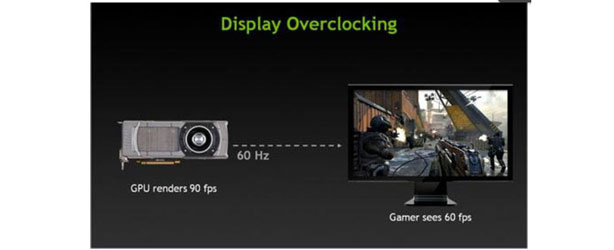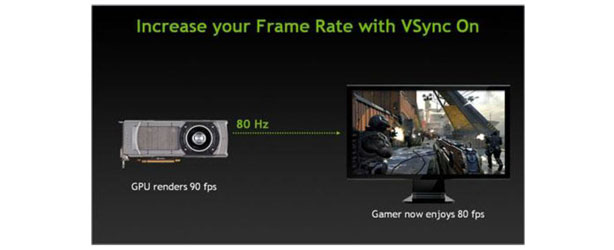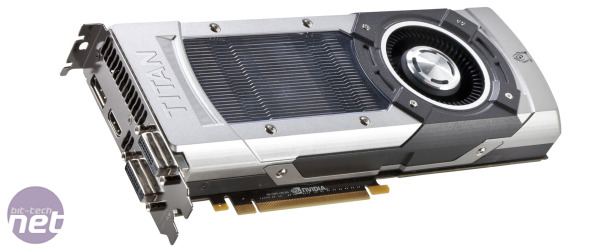Nvidia GeForce GTX Titan First Look
February 19, 2013 | 13:57
Companies: #nvidia-geforce-gtx-titan-first-look #titan

Display Overclocking
As with its GeForce GTX 680 launch of 11 months ago, Nvidia’s GTX Titan unveil has also brought with it a number of extra software optimisations too. In addition to its still-in-beta GeForce experience software that automatically adjust game settings to suit your GPU, the GTX Titan adds the ability to overclock your monitor. No, really.
The process of running panels above their stated refresh rate isn’t something that’s new, but until now it’s hardly been easily accessible to end-users. GTX Titan changes this, with the ability to force a higher refresh rate sent to your monitor. Whether your panel can comply or not will be down to luck and its specifications, but the result is a higher refresh rate at which to run v-sync. While 60fps is generally given as the target refresh rate, adding an extra 20, 30 or 40Hz will have a visible impact on frame rates.

We’ll be trialling this with a number of panels over the coming week and reporting back on our success or failures. The only disappointment is that this feature will not be coming to the rest of the GeForce range in the form of a driver update, as it apparently requires dedicated hardware to force the higher refresh rate.
Click to enlarge
That’s all for now
With Nvidia’s NDA tying our hands until 2pm Thursday when it comes to benchmarks, that’s about as much as we can cover on Titan today. Clearly Titan represents a large step up in single-GPU performance and capability over both the GeForce GTX 680 2GB and HD 7970 GHz Edition, with a great deal of additional resources on chip. However, the £830 price tag should indicate that this won’t be a card that’s anywhere near the sweet spot on the price/performance scale.We can therefore conclude that ,on a cost-benefit basis, GTX Titan won't make much sense. However, the same could be said for plenty of luxury products that sell well and the prospect of a sizeable increase in performance without the driver dependency and draw-backs of multi-GPU cards and set-ups is certainly attractive. It also seems likely that Titan will remain the top-card in Nvidia's stack for some time, with its Maxwell based chips still many months off.
If we take the GTX 580 1.5GB and GTX 560 Ti 1GB as a comparison (both the predecessor of the GTX Titan and GTX 680 2GB respectively), the performance difference was around 30 per cent, so we can realistically expect the same kind of increase from the Titan. Whether that’s enough to justify the (admittedly large) outlay is a question we'll have to wait until Thursday to answer.

MSI MPG Velox 100R Chassis Review
October 14 2021 | 15:04









Want to comment? Please log in.